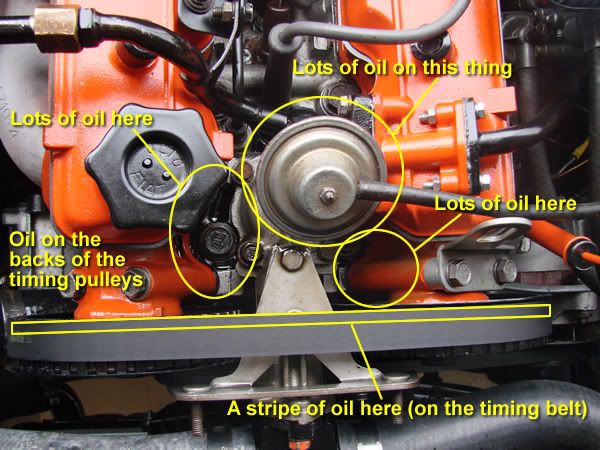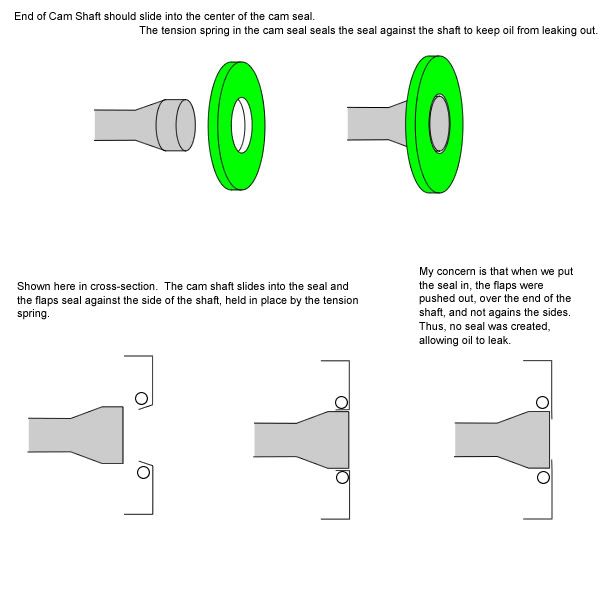There is oil pooling on top of the head between the cam towers, right at the front of the engine. It is on the timing shield bracket and around all the head and cam bolts at the front.
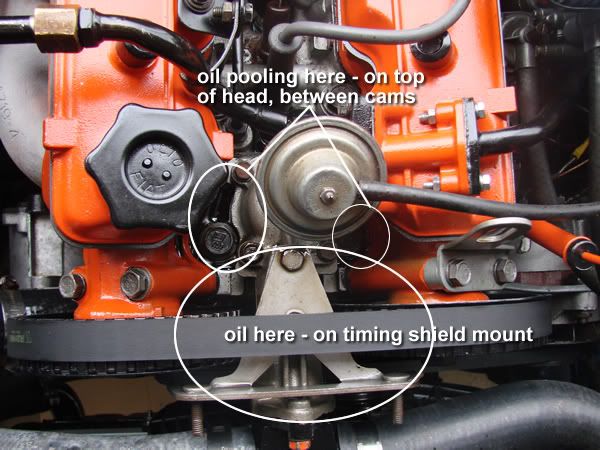
I also have a little oil running down both sides of the block. On the intake side it is most visible just below the fuel pump block-off plate and on the bottom of the oil pump.
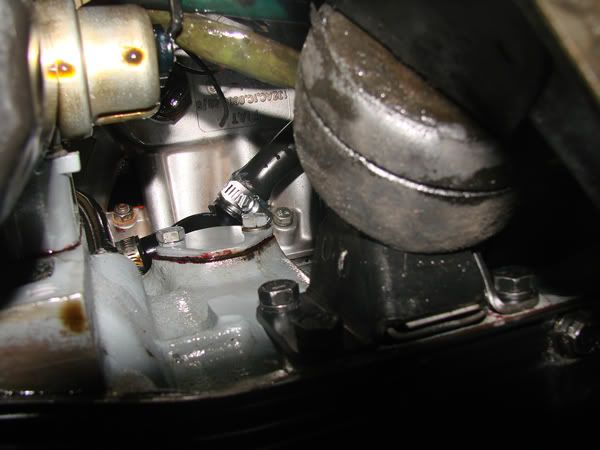
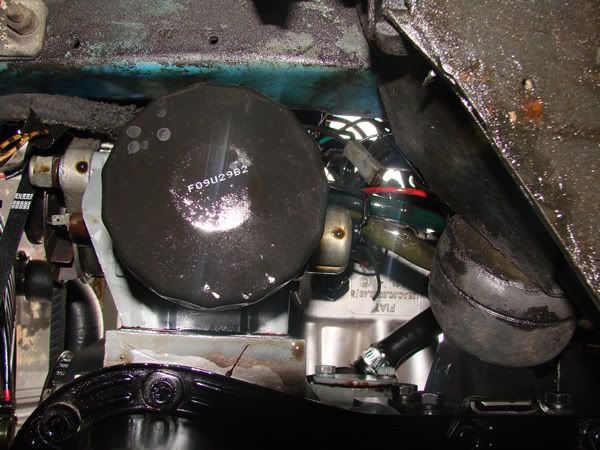
On the exhaust side, there is a sheen of oil on the block at the front end.

Underneath the engine, I can see where it is running down and dripping off the clutch cable and the big blue wire under the trans.
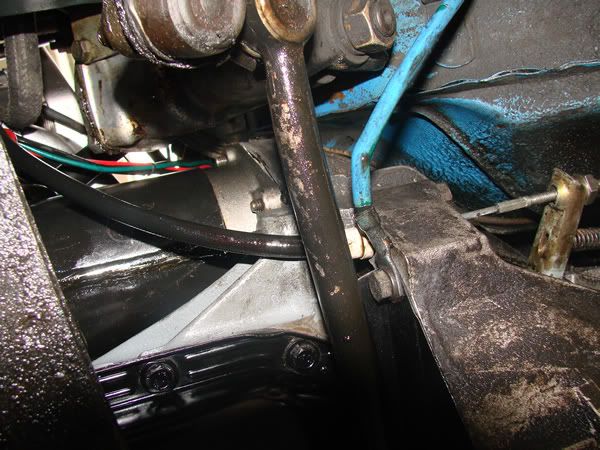
So I need some ideas. Is it possible that my cam towers are not tight enough, and I have oil seeping out there? How about the head bolts? We were a little tentative when torquing down the cam bolts because they kept stripping out the threads in the head.
Thanks all!
-- se

